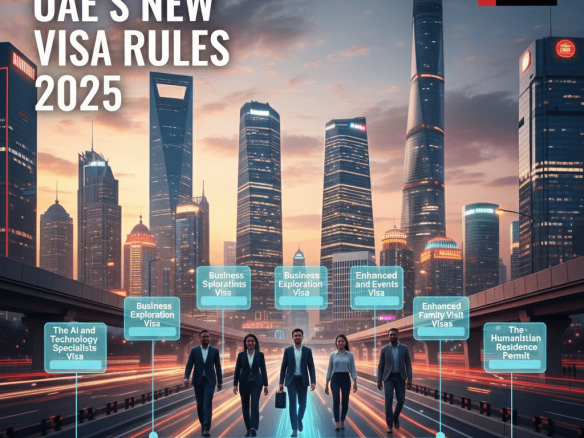Real Estate Industry and Competitors: Navigating the Competitive Landscape
The real estate industry represents a dynamic and complex ecosystem where understanding both the market structure and your competitive landscape is crucial for success. From global franchises to hyper-local boutique agencies, the players in this space are as diverse as the properties they transact. For professionals operating in markets like the UAE, where international and local competitors coexist, strategic positioning becomes particularly important.
The Modern Real Estate Industry Structure
Major Player Categories:
Global Franchises
- Brands like Keller Williams, RE/MAX, and Century 21
- Benefit from international recognition and standardized systems
- Strong referral networks across markets
- Challenge: Balancing corporate standards with local market adaptation
Local Powerhouses
- Established regional players with deep market knowledge
- Strong community connections and local reputation
- Examples: UAE-based agencies with decades of market presence
- Advantage: Understanding of cultural nuances and local regulations
Boutique Specialists
- Niche-focused agencies targeting specific property types or client segments
- Luxury properties, commercial real estate, or specific communities
- Strength: Highly personalized service and deep expertise in their niche
Digital Disruptors
- Technology-driven platforms changing traditional business models
- Online-first approaches with reduced commission structures
- Hybrid models combining digital efficiency with human expertise
Developer Affiliated Agencies
- Direct sales arms of major development companies
- Exclusive access to prime inventory and off-plan projects
- Advantage: Control over premium inventory and project information
Analyzing Your Competitive Landscape
Direct Competitors:
- Agencies operating in your same geographic area
- Similar business model and target audience
- Comparable service offerings and pricing structures
Indirect Competitors:
- Property portals offering direct owner-buyer connections
- For-sale-by-owner platforms
- Emerging proptech solutions automating traditional agent functions
Competitive Intelligence Framework:
Service Analysis:
- What additional services do competitors offer?
- How do they differentiate their client experience?
- What technology platforms are they using?
Marketing Assessment:
- Which channels are they dominating?
- What messaging resonates with their audience?
- How are they positioning themselves in the market?
Pricing Strategy:
- Commission structures and fee models
- Value-added services included in standard fees
- Flexible pricing for different property types
Talent Evaluation:
- How are they attracting and retaining top agents?
- Training programs and support systems
- Compensation structures and incentives
Strategic Responses to Competition
Differentiation Strategies:
Service Excellence:
- Develop signature service standards that exceed market norms
- Create memorable client experiences that generate referrals
- Implement systematic follow-up and relationship nurturing
Specialization Focus:
- Become the undisputed expert in a specific property type
- Develop deep knowledge of particular communities
- Target underserved market segments
Technology Integration:
- Adopt proptech solutions that enhance efficiency
- Develop proprietary tools that provide competitive advantage
- Create seamless digital experiences for modern clients
Strategic Partnerships:
- Align with complementary service providers
- Develop referral networks with international agencies
- Create joint ventures for specific projects or market segments
The UAE Competitive Context
The UAE market presents unique competitive dynamics:
International Appeal:
- Global investors requiring international service standards
- Need for multicultural team capabilities
- Understanding of cross-border transaction complexities
Regulatory Environment:
- RERA regulations creating structured competition
- Transparency requirements leveling the playing field
- Professional standards raising industry quality
Market Maturity:
- Increasing sophistication among consumers
- Growing demand for data-driven insights
- Higher expectations for professional expertise
Building Sustainable Competitive Advantage
Long-term Assets:
- Strong brand reputation and recognition
- Loyal client base and referral network
- Talented and stable team of professionals
- Proprietary data and market intelligence
Adaptive Capabilities:
- Ability to quickly respond to market shifts
- Continuous innovation in service delivery
- Regular technology updates and integration
- Ongoing team training and development
The Bottom Line
In the real estate industry, your competitors are not just rivals to be beaten but valuable markers indicating market opportunities and evolving client expectations. The most successful agencies don’t just react to competition—they anticipate market shifts, differentiate through superior service, and build organizations capable of adapting to whatever changes come next. By understanding your competitive landscape and strategically positioning your services, you can build a sustainable business that thrives regardless of market conditions.
How do you monitor your competitors in the real estate market? What competitive strategies have proven most effective for your business? Share your insights in the comments below.
Realty Access Blog is committed to providing UAE real estate professionals with the strategies, insights, and tools they need to thrive in a competitive market.



Join The Discussion